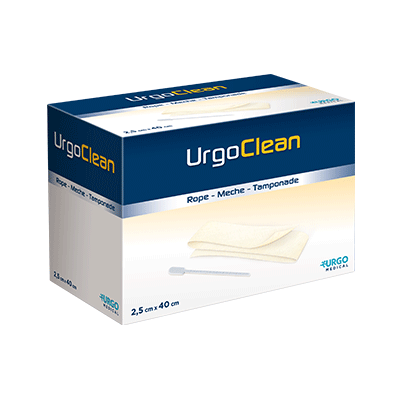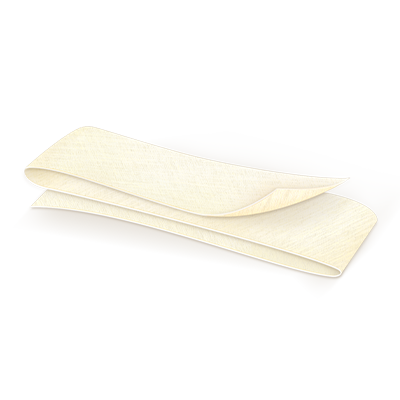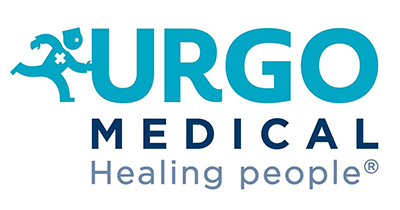UrgoClean® Rope


Rope with poly-absorbent fibres and sterile probe
FEATURES
| FEATURES | BENEFITS |
|---|---|
|
|
|
|
|
|
INDICATIONS
- Deslouching phase of chronic exuding wounds (eg leg ulcers, pressure injuries, diabetic foot ulcers)
- Potentially sloughy wounds
- acute wounds (burns, skin abrasions, traumatic wounds)
- post-operative wound
- cancerous wounds
CONTRAINDICATIONS
- Do not use if there is a known sensitivity to UrgoClean®
- Do not use UrgoClean® as a surgical sponge for heavily bleeding wounds
- Do not use in fistula wounds with a diameter less than that of the probe, do not use on dry wounds
- Do not use as surgical packing (non-resorbable rope)
- Do not use in endo-nasal area in rhino-sinusitis surgery
PRECAUTIONS
- The soft-adherent TLC layer of UrgoClean® adheres to latex gloves. It is therefore recommended that the dressing be handled carefully, avoiding any contact with the soft-adherent side or using sterile forceps. The concomitant use of a cream, lotion, ointment or emulsion is not recommended
- Due to the non-occlusive nature of this dressing, UrgoClean® can be used on infected wounds under close medical supervision
- During the desloughing process, the wound may appear to be larger in size. This is due to the effective removal of slough
- Do not re-sterilise the dressing
- Check that the sterile protector is intact before use. Do not use if package is damaged
- Single use sterile individual packaging: re-using a single use dressing may lead to risks of infection
DIRECTIONS FOR USE
PRODUCT OPTIONS
| Product Code | Product Size | Units/Box |
|---|---|---|
| 100373 | Rope 5x40cm | 5 |
| 100374 | Rope 2.5x40cm | 5 |
Supplied with a sterile probe.
CLINICAL EVIDENCE
1. White R. Supporting evidence-based practice: a clinical review of TLC healing matrix, Wound Care 2015;24(8): S1-S47.
2. Grothier L. Improving clinical outcomes and patient experience through the use of desloughing. Br J Comm Nurs 2015;20(9):1-6.
Page updated on 20 May 2024

